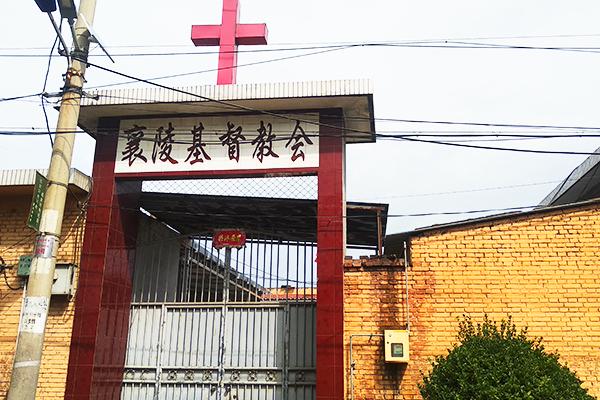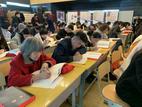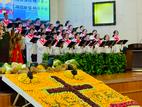Huozhou City is located in the south-central part of the Shanxi Province. According to the Records of Unification, the county (now the city) is named after the Huoshan in the east of the county. Under the jurisdiction of Linfen City, Houzhou is located at the junction between Linfen and Jinzhong Basin, with a total area of 765 square kilometers (0.18 acres). Rich in natural resources, it is one of the primary energy and heavy chemical bases in Shanxi Province. As early as hundreds of thousands of years ago, there were ancient people living in the territory, which belonged to the early paleolithic human culture.
In 1877, Shanxi suffered a period of severe drought. The British missionary Timothy Richard visited Shanxi to assist with the relief efforts while introducing Christianity to the northern China province at the same time. In 1880, Xi Shengmo, a native of Xiangling who later became Pastor Hsi, Pingyang Prefecture, Shanxi Province, set up a smoking cessation bureau in Gutan City to persuade people to convert to Christianity by quitting smoking. This was the beginning of the introduction of Christianity into Huozhou.
In 1885, two female Norwegian missionaries whose Chinese surnames were Shi and Ren set up a church in Huoxian County. At that time, Christianity had established a certain foundation among the people, and the scope of missionary activity was mainly in Chengguan, Dawang Village, Yuantou, and Taohua Canal. In 1900, a female missionary from France, donated money to build a mission hospital on the north side of Guanpo Street in the county.
In 1909, Pastor Wang Bingjun, a resident of Tuanbai, Fenxi County, appealed for believers to donate funds. This sum of money, together with the Boxer Indemnity, was then used to build a chapel and a dining hall. In addition to the original church hospital, the church consisted of 130 rooms and nine cave dwellings, covering an area of about nine mu (1.48 acres).
During the winter months, the British Protestant Westminster Abbey donated silver to build Chongzhen Female Primary School, with three British female teachers, Alice Mildred Cable, Francesca French, and Evangeline French. Since education was not universal in society at that time, there were many students in missionary schools. In addition to the county, there were also students from Hebei, Shaanxi, and other places who came to apply for education. It was estimated that there were more than 160 students.
Alice Mildred Cable was both the headmaster and a missionary. The school was divided into three departments: primary school, junior high school, and normal school. Soon after that, Li Youwa and Zhang Kaiquan started Hongwen School with about 40 students.
In 1929, influenced by the full acceptance of the universal primary school, the two schools were closed for a time, and then reopened. In 1937, when the Anti-Japanese War broke out, the schools run by Christian churches were completely closed.
From 1925 to the outbreak of the Second Sino-Japanese War in 1937, the British Pastor who Chinese last name was Shi and his wife came to Huozhou frequently. During this period, the church had produced educational material to relieve the bad habit of foot-binding for women.
In 1927, five local Christians together purchased a piece of land as another site for the Christian church. A sign which read “Huofen Christian Church in China” was hung outside the hospital. The church issued leaflets and declarations, and foreigners were not allowed to enter the hospital to conduct worship services. During the War of Resistance against Japanese Aggression, the academy also protected many refugees and progressors.
In 1934, the Christian Church of Huo County had 154 followers, 93 of which were men. In the first month of 1938, the Japanese occupied Huo County, then presided over the church affairs of the Australian Pastor Dunes (female), and the British pastor Shi and his wife opened a refugee shelter, providing safety for the people who could not escape from the city to avoid the ravages of the Japanese. That same year, Shi was transferred.
In 1934, Qin Yuhong, a resident of Guanxiang Village in the county, and Guo Xuequan, a pastor in the city, took charge of the church affairs and lived in the Guanpo Church compound. In 1946, Guo and Duan Jinbu (female) presided over the church affairs.
After the liberation of the county in around 1949, the church ceased its activities. In 1958 when the socialist transformation was carried out, Guo Xuequan unconditionally applied for the transformation of all the houses on behalf of the believers. From then on, the Guanpo Street Christian compound was used by the county party committee.
In terms of denominations, there were many Christian denominations in Huo County. In addition to the Inland Church, there is the Seventh-day Adventist Church. In 1946, the county was liberated and the church was closed. In 1980, the Inland Mission Church merged with the Seventh-day Adventist Church to form the Huo County Church.
In 1989, according to the religious freedom policy, the old Christian church site occupied by the public security department was returned. In May 1990, the Christian Three-self Patriotic Movement committee of Huozhou City was established, directed by An Shixue. Since then, both the China Inland Mission Church and the Seventh-day Adventist in the city had been using the cathedral, and the former held their services on Sunday and the Seventh-day Adventists on Saturday.
In 1991, when Fengzhang and other parts of the city were hit by hailstorms, churchgoers donated money and clothes. In July, there were 11 registered Christian venues. On May 11, 1998, the first meeting of the second TSPM committee was held, and the new leadership was elected.
As of 2010, there were 1500 Christian believers in Huozhou, and more than 3000 religious worshippers.
(Originally published by Gospel Times, the article refers to the books The Complete Works of Linfen Administrative Districts and Annals of Huozhou City.)
- Translated by Nicolas Cao












